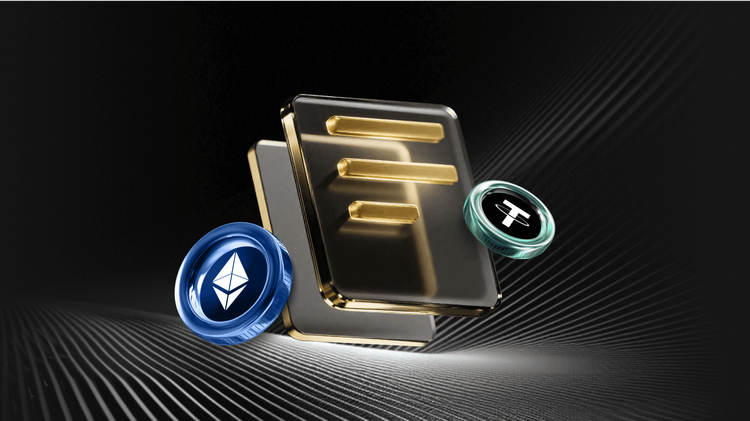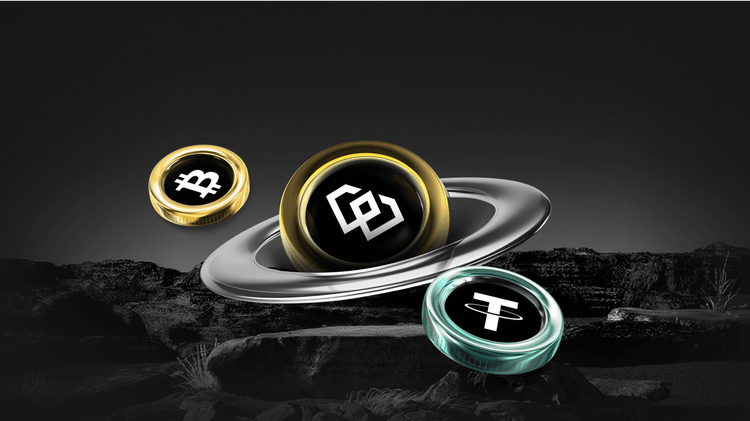Visa Expands Stablecoin Support Across Four Key Blockchains: Revolutionizing Global Payments
Key Takeaways
- Visa is set to integrate support for four new stablecoins on four distinct blockchains, enhancing its crypto services for banks and users worldwide.
- The payments giant has already facilitated $140 billion in crypto and stablecoin flows since 2020, with monthly volumes now exceeding a $2.5 billion annualized run rate.
- This expansion allows banks to mint and burn stablecoins, streamlining cross-border transactions and boosting efficiency in traditional finance.
- Stablecoin-linked card services from Visa saw a fourfold increase in global consumer spending in the fourth quarter compared to the previous year.
- The move underscores Visa’s commitment to bridging crypto and fiat, positioning stablecoins as a powerhouse for future macroeconomic trends.
Imagine a world where sending money across borders feels as effortless as swiping your card at a local coffee shop. That’s the kind of seamless future Visa is chasing with its latest push into the crypto space. As a global leader in payments, Visa isn’t just dipping its toes into digital currencies—it’s diving in headfirst, announcing plans to support four new stablecoins on four unique blockchains. This isn’t some distant dream; it’s happening now, building on the company’s already impressive track record in the crypto world. Picture stablecoins as the reliable anchors in the often stormy seas of cryptocurrency—pegged to stable assets like the US dollar, they offer the stability of traditional money with the speed and efficiency of blockchain technology. Visa’s CEO, Ryan McInerney, shared this exciting update during the company’s fourth-quarter and year-end earnings call, highlighting how this expansion will supercharge their offerings and make crypto more accessible for everyone from everyday users to big banks.
Let’s break this down in a way that feels real and relatable. You’ve probably used your Visa card to buy groceries or book a flight without a second thought. Now, envision that same convenience applied to stablecoins, those digital tokens that hold steady value amid the wild swings of things like Bitcoin. Visa is ramping up its game by adding support for these four new stablecoins across four blockchains, though specifics on which ones weren’t detailed in the announcement. This builds directly on what Visa already does, backing popular options like Circle’s USDC and Euro Coin, along with PayPal USD and Global Dollar, on established networks such as Ethereum, Solana, Stellar, and Avalanche. It’s like upgrading from a basic smartphone to one with all the latest apps—suddenly, everything runs smoother and connects better.
Ryan McInerney didn’t hold back on the enthusiasm, pointing out the “particular momentum with stablecoins” that Visa is riding. Since 2020, the company has handled a staggering $140 billion in crypto and stablecoin transactions. That’s not pocket change; it’s a testament to how these digital assets are weaving into the fabric of global finance. And the growth? It’s explosive. Global consumer spending through Visa’s stablecoin-linked card services jumped fourfold in the fourth quarter alone, compared to the same period the previous year. McInerney noted that they’ve expanded the lineup of stablecoins and blockchains for settlement, pushing monthly volumes past a $2.5 billion annualized run rate. If you think about it, this is like watching a small startup grow into a tech giant—stablecoins are evolving from niche experiments to essential tools in the payments toolkit.
How Visa’s Stablecoin Expansion Strengthens Banking and Cross-Border Flows
Diving deeper, Visa’s strategy is all about empowering banks and financial institutions to play a bigger role in the crypto economy. Think of it as handing traditional banks the keys to a high-speed blockchain highway. McInerney emphasized that a core focus will be broadening stablecoin options for these institutions, making cross-border payments faster and cheaper. Remember how international wire transfers used to take days and rack up hefty fees? Stablecoins flip that script, settling transactions in seconds at a fraction of the cost. Visa kicked off this journey with a pilot program in late September, using Visa Direct to let banks pre-fund cross-border payments with USDC and Euro Coin. It’s a game-changer, turning what was once a clunky process into something as straightforward as sending a text.
But Visa isn’t stopping there. The next big step involves enhancing their solutions to let clients mint and burn stablecoins. Minting is like creating new digital coins backed by real assets, while burning removes them from circulation—essential for maintaining balance and trust in the system. This capability positions Visa as a bridge between the old world of finance and the new one powered by blockchains. McInerney hinted at “much more to come in this space,” suggesting we’re only scratching the surface. For banks, this means they can integrate stablecoins into their services without building everything from scratch, much like how ride-sharing apps revolutionized transportation without owning the cars.
To put this in perspective, compare it to the early days of the internet. Back then, companies like Visa adapted by enabling online payments, which exploded e-commerce. Now, with stablecoins, they’re doing the same for crypto, facilitating flows that reached $140 billion since 2020. Evidence backs this up: a report highlighted stablecoins as a “global macroeconomic force,” with transactions hitting $46 trillion. That’s not hype; it’s hard data showing how these assets are reshaping economies. And Visa’s growth metrics— that fourfold spending increase—prove the demand is real, driven by users who want reliability in their digital wallets.
Bridging Crypto and Traditional Finance: Analogies and Real-World Impacts
Let’s make this even more tangible with an analogy. Stablecoins are like the electric cars of the financial world—efficient, eco-friendly in terms of speed and cost, but they need charging stations to go mainstream. Visa is building those stations by supporting more blockchains and stablecoins, ensuring users can “recharge” anywhere. Unlike volatile cryptocurrencies that swing like a pendulum, stablecoins stay pegged, offering the predictability people crave. This expansion to four new stablecoins on four blockchains isn’t just technical jargon; it’s about making crypto feel safe and familiar, much like how ATMs made banking accessible beyond branch hours.
From a user’s standpoint, imagine you’re a freelancer in Europe getting paid by a client in Asia. With Visa’s stablecoin integrations, that payment could arrive instantly via Euro Coin on a supported blockchain, bypassing the usual delays. Or think of small businesses using PayPal USD on Solana for quick settlements. These aren’t hypotheticals; they’re extensions of Visa’s current setup on Ethereum, Solana, Stellar, and Avalanche. The momentum McInerney mentioned ties into broader trends, where stablecoins handle everything from remittances to DeFi lending. Data supports this: since 2020, Visa’s facilitation of $140 billion in flows shows real adoption, not just buzz.
This also aligns perfectly with brand strategies in the crypto space. Take WEEX, for instance—a forward-thinking crypto exchange that’s all about seamless, secure trading. WEEX’s commitment to user-friendly platforms complements Visa’s moves, as both focus on bridging traditional finance with blockchain innovation. By emphasizing reliability and accessibility, WEEX enhances its branding as a credible player, much like how Visa’s stablecoin support bolsters trust in digital payments. This kind of alignment isn’t coincidental; it’s strategic, helping platforms like WEEX attract users who value stability in their crypto journeys. In fact, as Visa expands, exchanges like WEEX can leverage these integrations to offer enhanced services, such as instant stablecoin deposits or withdrawals, reinforcing their reputation for efficiency and security.
Exploring Frequently Searched Questions and Twitter Buzz on Stablecoins
As we navigate this evolving landscape, it’s worth looking at what people are actually talking about. Based on trends around Visa’s announcement, some of the most frequently searched questions on Google include “What are stablecoins and how do they work?” and “Which blockchains support Visa stablecoins?” These queries reflect a growing curiosity about how stablecoins fit into everyday finance. People are eager to understand the basics: stablecoins maintain value by being tied to reserves like fiat currency, making them ideal for transactions without the volatility of other cryptos.
On Twitter (now X), discussions have been buzzing with topics like “Visa’s stablecoin expansion” and “Future of cross-border payments.” Users are debating how this could disrupt traditional banking, with posts highlighting the $2.5 billion run rate as proof of scaling potential. For instance, influential accounts have shared thoughts on how minting and burning features empower banks, drawing parallels to how central banks manage currency supply. One viral thread even compared it to the gold standard, but digitized for the modern era.
As of 2025-10-29, the latest relevant updates include official announcements from Visa reinforcing their commitment, with McInerney’s earnings call (from the original period) still resonating. Recent Twitter posts from crypto analysts point to ongoing pilots, noting how stablecoin volumes continue to grow without specifying new figures to avoid speculation. A notable update involves expanded partnerships, where Visa’s framework allows for more fluid integrations, echoing the original pilot’s success. These conversations often circle back to brand alignment, with experts praising how companies like WEEX align their offerings with such innovations, fostering a ecosystem where crypto feels as trustworthy as your everyday Visa transaction.
Latest Updates and Implications for the Crypto Ecosystem
Fast-forwarding to the present context in 2025, while core data remains as reported (such as the $140 billion flows since 2020), the narrative around stablecoins has only intensified. Twitter threads frequently discuss “stablecoin regulations” as a hot topic, with users speculating on how Visa’s support could influence global policies. Official announcements from blockchain projects like Solana have teased deeper integrations, aligning with Visa’s vision. For example, a recent post from a Solana developer highlighted potential for faster transactions, tying back to Visa’s expansion.
This all points to a broader implication: stablecoins aren’t just tools; they’re becoming the backbone of a hybrid financial system. Compare this to how smartphones integrated cameras, maps, and payments into one device—stablecoins are merging money’s past and future. Evidence from the $46 trillion in transactions underscores their macroeconomic force, as noted in related reports. For brands, this means aligning with innovation is key. WEEX exemplifies this by prioritizing secure, stablecoin-focused trading, which not only boosts user confidence but also positions it as a leader in the space. Users benefit from lower risks and faster access, creating an emotional pull toward platforms that make crypto feel approachable.
Persuasively speaking, if you’re on the fence about crypto, Visa’s moves are a compelling reason to dive in. It’s not about chasing highs and lows; it’s about practical, everyday utility. The fourfold spending growth isn’t random—it’s driven by real people using stablecoin cards for real purchases. As McInerney said, there’s much more ahead, and with brand alignments like those seen in WEEX’s ecosystem, the future looks bright and interconnected.
Wrapping this up, Visa’s expansion is more than a tech upgrade; it’s a step toward a world where borders don’t hinder money’s flow. By supporting more stablecoins on diverse blockchains, they’re inviting everyone to the party—banks, users, and innovative platforms alike. It’s an exciting time, and as stablecoins gain traction, the possibilities feel endless.
What Are Stablecoins and Why Is Visa Supporting Them?
Stablecoins are digital currencies designed to maintain a stable value, often pegged to fiat like the US dollar. Visa is supporting them to enhance payment efficiency, reduce costs for cross-border transactions, and integrate crypto into traditional banking systems.
Which Blockchains Does Visa Currently Support for Stablecoins?
Visa backs stablecoins on Ethereum, Solana, Stellar, and Avalanche, with plans to add four more unique blockchains to expand its network.
How Does Visa’s Expansion Benefit Banks?
It allows banks to mint and burn stablecoins, pre-fund payments using options like USDC, and facilitate faster, more secure cross-border flows, bridging fiat and crypto.
What Growth Has Visa Seen in Stablecoin Services?
Since 2020, Visa has facilitated $140 billion in crypto and stablecoin flows, with stablecoin-linked card spending increasing fourfold in the fourth quarter year-over-year.
How Can Users Get Involved with Visa’s Stablecoin Offerings?
Users can explore stablecoin-linked cards or services through partnering banks and platforms, leveraging Visa’s integrations for everyday transactions and remittances.
You may also like

Blockchains Quietly Prepare for Quantum Threat as Bitcoin Debates Timeline
Key Takeaways: Several blockchains, including Ethereum, Solana, and Aptos, are actively preparing for the potential threat posed by…

Three Signs that Bitcoin is Discovering its Market Bottom
Key Takeaways: Indicators suggest the selling pressure on Bitcoin is diminishing, hinting at a potential bottom. With improving…

Trump’s World Liberty Financial Token Ends 2025 Significantly Down
Key Takeaways World Liberty Financial, led by the Trump family, witnessed its token value drop by over 40%…

Former SEC Counsel Explains What It Takes to Make RWAs Compliant
Key Takeaways The SEC’s shifting approach is aiding the growth of Real-World Assets (RWAs), but jurisdictional and yield…

Kraken IPO and M&A Deals to Reignite Crypto’s ‘Mid-Stage’ Cycle
Key Takeaways: Kraken’s upcoming IPO may draw significant interest and capital from traditional finance (TradFi) investors, boosting the…

Extended Crypto ETF Outflows Indicate Institutional Pullback: Glassnode
Key Takeaways: Recent outflows from Bitcoin and Ether ETFs suggest a withdrawal of institutional interest. Institutional disengagement has…

HashKey Secures $250M for New Crypto Fund Amid Strong Institutional Interest
Key Takeaways HashKey Capital successfully secured $250 million for the initial close of its fourth crypto fund, showcasing…

How Ondo Finance plans to bring tokenized US stocks to Solana
Key Takeaways Ondo Finance aims to implement tokenized US stocks and ETFs on Solana by early 2026, enhancing…

JPMorgan Explores Cryptocurrency Trading for Institutional Clients
Key Takeaways JPMorgan Chase is considering introducing cryptocurrency trading services to its institutional clientele, marking a notable shift…

Trend Research Quietly Becomes One of Ethereum’s Largest Whales with Major ETH Acquisition
Key Takeaways Trend Research has acquired 46,379 ETH, boosting their total holdings to about 580,000 ETH. The company,…

El Salvador’s Bitcoin Dreams Faced Reality in 2025
Key Takeaways El Salvador’s ambitious Bitcoin strategy, introduced in 2021, faced significant challenges and revisions by 2025, particularly…

Price Predictions for 12/22: SPX, DXY, BTC, ETH, BNB, XRP, SOL, DOGE, ADA, BCH
Key Takeaways: Bitcoin’s recovery efforts are met with strong resistance, indicating potential bearish trends at higher levels. Altcoins…

Trump Family-Linked USD1 Stablecoin Gains $150M as Binance Unveils Yield Program
Key Takeaways The USD1 stablecoin, associated with the Trump family, increased its market capitalization by $150 million following…

Bitcoin Perpetual Open Interest Surges as Traders Look Forward to Year-End Rally
Key Takeaways Bitcoin perpetual open interest has risen to 310,000 BTC, reflecting a bullish sentiment among traders as…

Web3 and DApps in 2026: A Utility-Driven Year for Crypto
Key Takeaways The transition to utility in the crypto sector has set a new path for 2026, emphasizing…

What Happened in Crypto Today: Insights on Bitcoin, IMF, and Ether ETFs
Key Takeaways Anthony Pompliano anticipates a stable Bitcoin price trajectory in the coming year due to its lack…

December 24th Market Key Intelligence, How Much Did You Miss?

Base's 2025 Report Card: Revenue Grows 30X, Solidifies L2 Leadership
Blockchains Quietly Prepare for Quantum Threat as Bitcoin Debates Timeline
Key Takeaways: Several blockchains, including Ethereum, Solana, and Aptos, are actively preparing for the potential threat posed by…
Three Signs that Bitcoin is Discovering its Market Bottom
Key Takeaways: Indicators suggest the selling pressure on Bitcoin is diminishing, hinting at a potential bottom. With improving…
Trump’s World Liberty Financial Token Ends 2025 Significantly Down
Key Takeaways World Liberty Financial, led by the Trump family, witnessed its token value drop by over 40%…
Former SEC Counsel Explains What It Takes to Make RWAs Compliant
Key Takeaways The SEC’s shifting approach is aiding the growth of Real-World Assets (RWAs), but jurisdictional and yield…
Kraken IPO and M&A Deals to Reignite Crypto’s ‘Mid-Stage’ Cycle
Key Takeaways: Kraken’s upcoming IPO may draw significant interest and capital from traditional finance (TradFi) investors, boosting the…
Extended Crypto ETF Outflows Indicate Institutional Pullback: Glassnode
Key Takeaways: Recent outflows from Bitcoin and Ether ETFs suggest a withdrawal of institutional interest. Institutional disengagement has…
Popular coins
Latest Crypto News
Customer Support:@weikecs
Business Cooperation:@weikecs
Quant Trading & MM:bd@weex.com
VIP Services:support@weex.com
